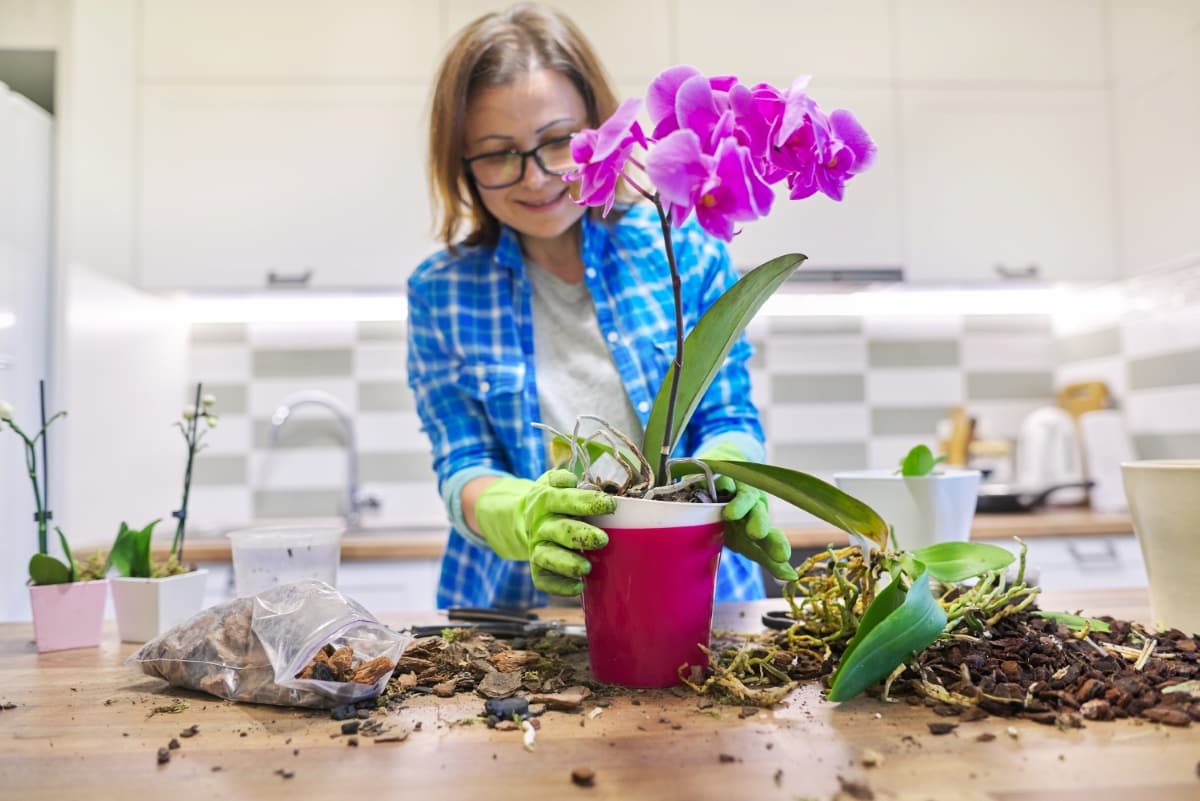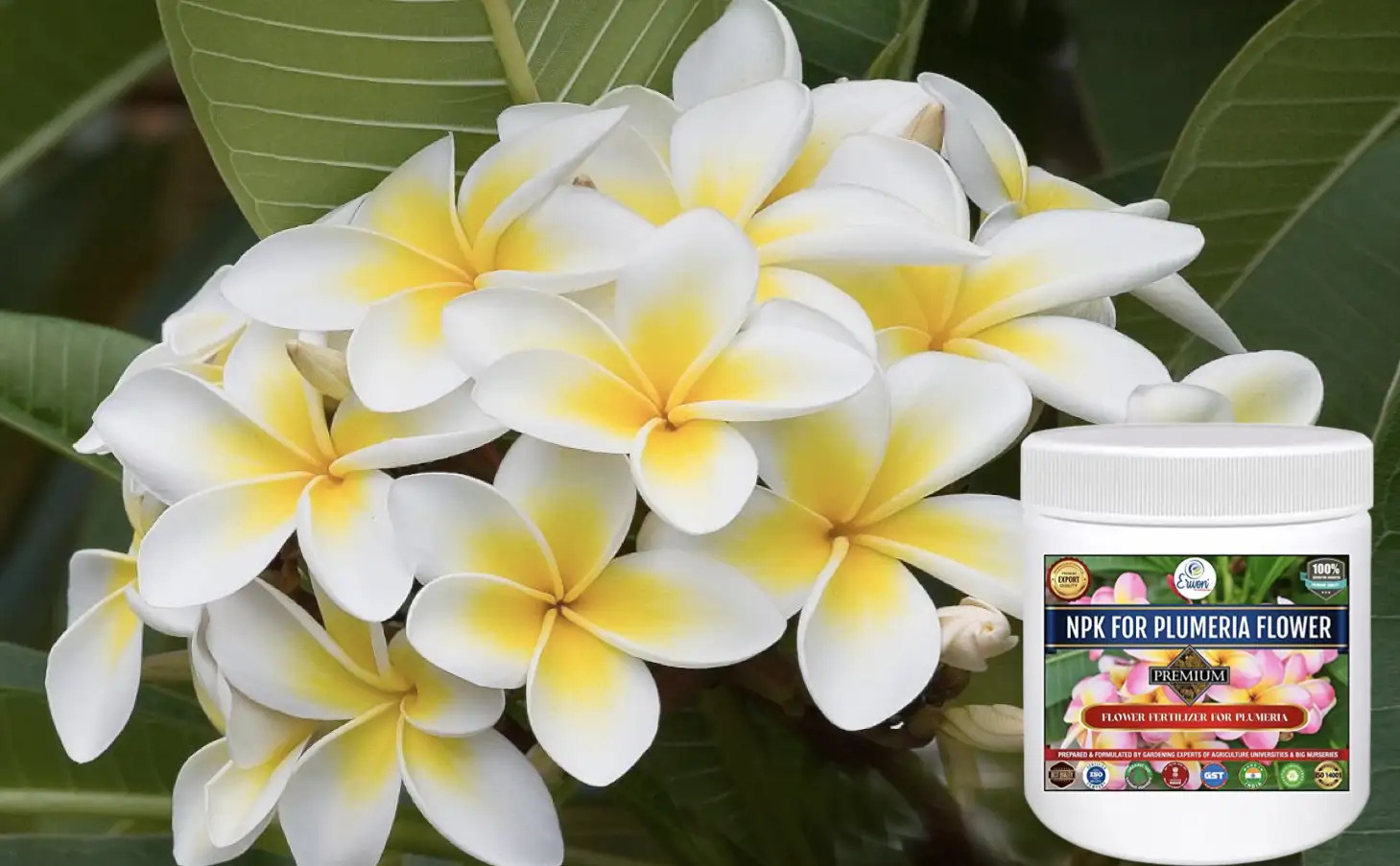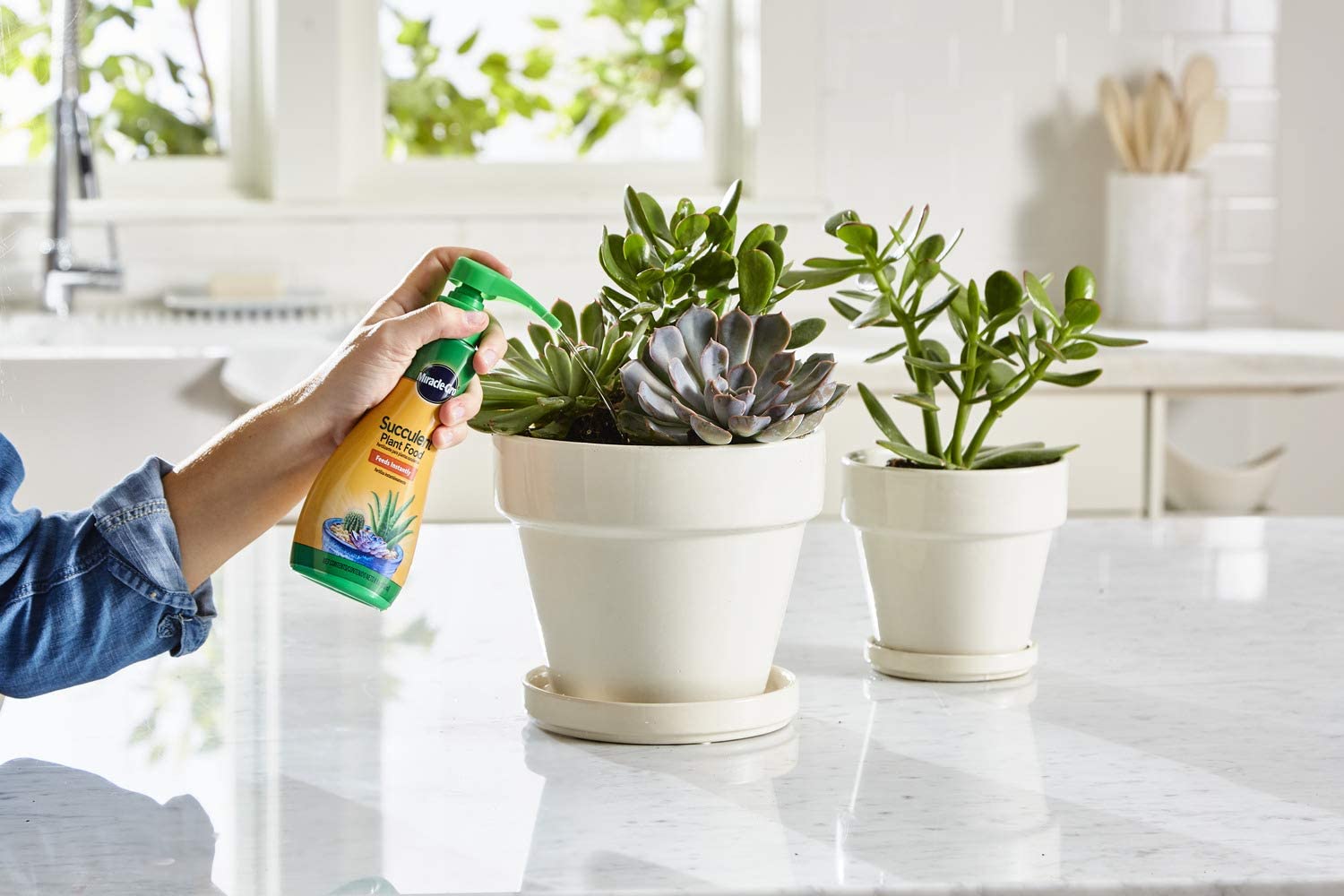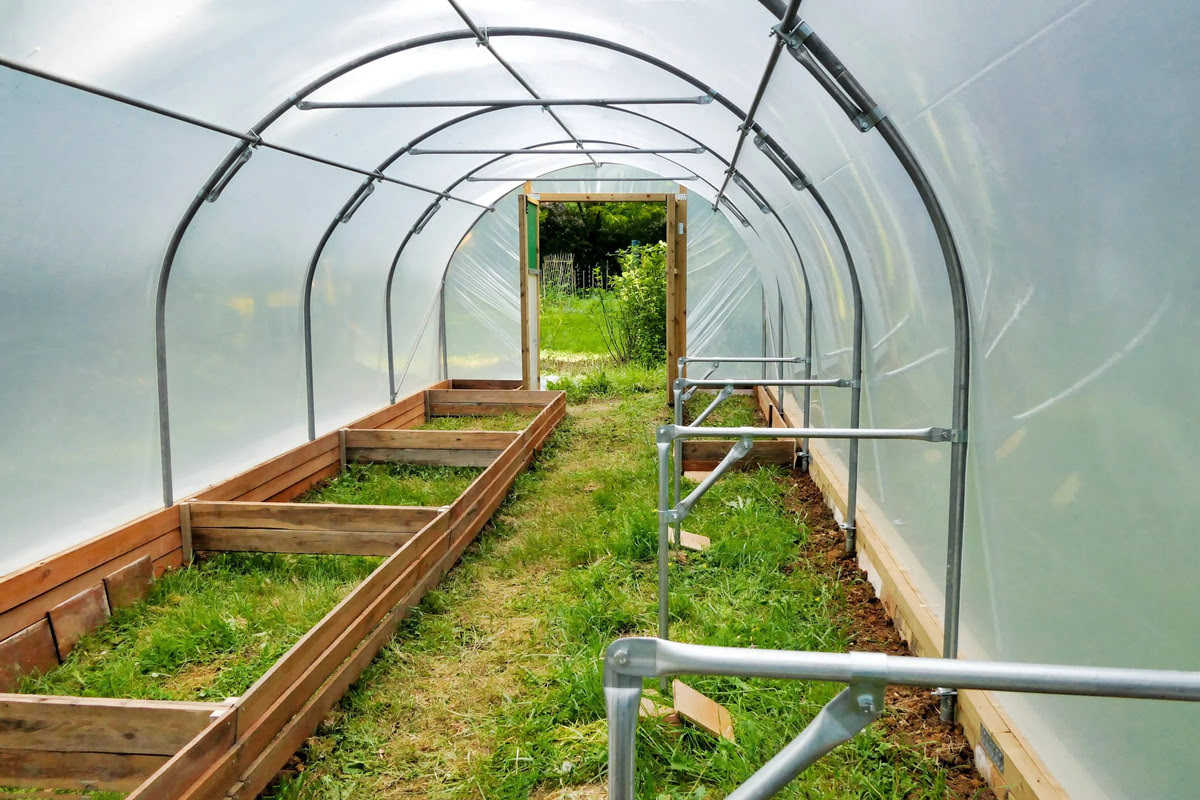Home>Gardening Techniques>DIY Projects>What Kind Of Plastic For Greenhouse
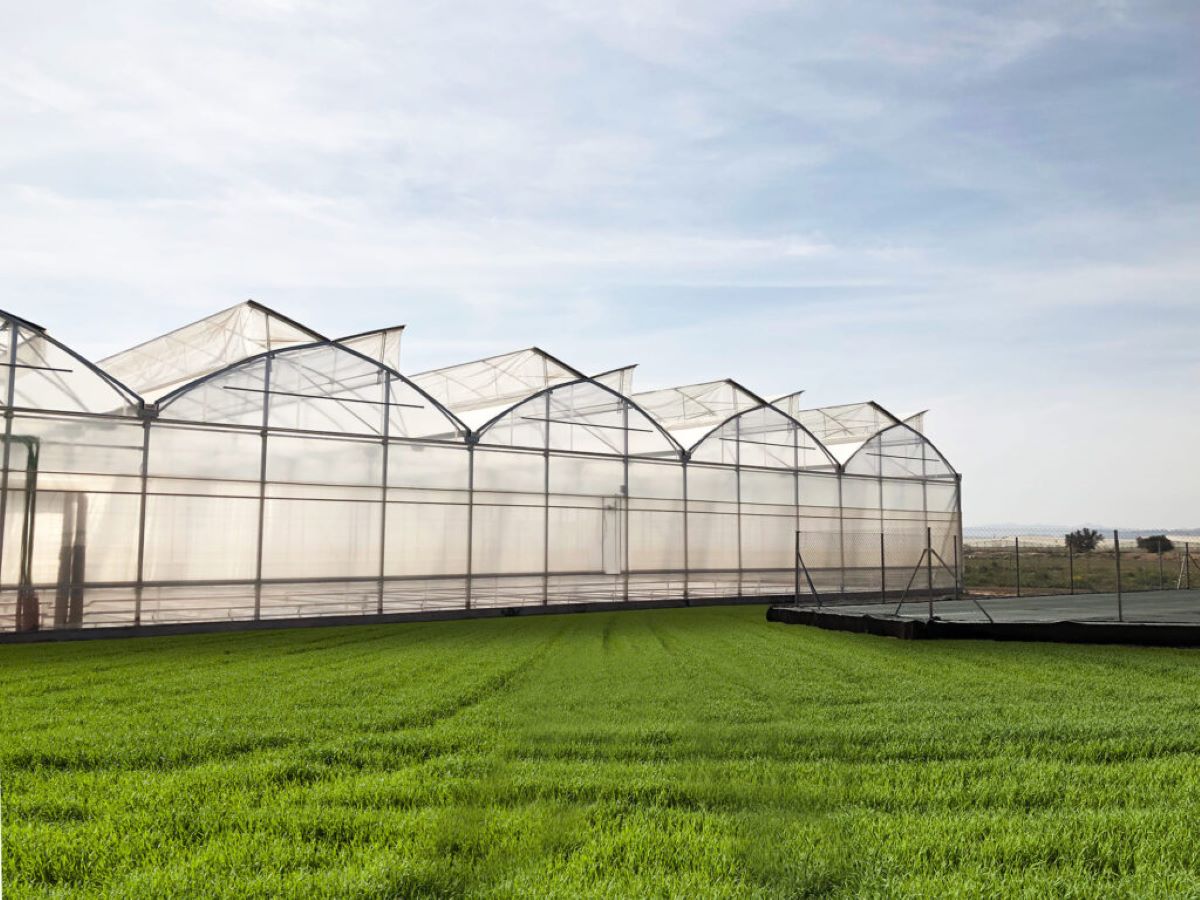

DIY Projects
What Kind Of Plastic For Greenhouse
Modified: January 22, 2024
Find out the best type of plastic for greenhouse DIY projects to create a thriving and eco-friendly indoor gardening space.
(Many of the links in this article redirect to a specific reviewed product. Your purchase of these products through affiliate links helps to generate commission for Chicagolandgardening.com, at no extra cost. Learn more)
Table of Contents
- Introduction
- Benefits of Using Plastic in Greenhouse Construction
- Factors to Consider When Choosing Plastic for a Greenhouse
- Different Types of Plastic Commonly Used in Greenhouses
- Polyethylene (PE) Plastic
- Polyvinyl Chloride (PVC) Plastic
- Polycarbonate (PC) Plastic
- Ethylene-vinyl acetate (EVA) Plastic
- Acrylic Plastic
- Conclusion
Introduction
Welcome to the world of greenhouse gardening! If you’re passionate about growing your own plants, flowers, or vegetables, a greenhouse can be a game-changer. It allows you to extend the growing season, protect your plants from harsh weather conditions, and create an optimal environment for healthy growth.
One of the crucial elements in greenhouse construction is the choice of material for the covering. While glass was traditionally used, plastic has gained popularity due to its numerous advantages. Plastic is lightweight, affordable, easy to install, and provides excellent insulation. Additionally, it allows for diffused light transmission, which is vital for plant growth.
However, not all plastics are created equal, and choosing the right kind of plastic for your greenhouse is essential for optimal performance and durability. In this article, we will explore the different types of plastic commonly used in greenhouse construction, their benefits, and the factors to consider when making your selection.
Whether you’re a seasoned gardener or a beginner, understanding the different types of plastic available for greenhouses will help you make an informed decision and ultimately create a thriving, productive growing environment. So, let’s dive in and explore the world of greenhouse plastics!
Benefits of Using Plastic in Greenhouse Construction
Plastic has become the material of choice for greenhouse construction due to its numerous benefits. Let’s take a closer look at why using plastic in greenhouse construction is advantageous:
- Affordability: One of the most significant advantages of using plastic in greenhouse construction is its affordability. Compared to glass or other materials, plastic is much more cost-effective, making it a practical option for both hobbyist gardeners and commercial growers.
- Lightweight: Plastic is a lightweight material, making it easier to handle and install. This is particularly helpful if you have a self-built or portable greenhouse where you may need to move or reconfigure the structure.
- Excellent Insulation: Plastic provides excellent insulation properties, helping to maintain a stable and controlled environment within the greenhouse. It traps heat effectively, allowing you to extend the growing season and protect your plants from sudden temperature fluctuations.
- Diffused Light Transmission: One of the essential factors for plant growth is light. Plastic covering for greenhouses allows for diffused light transmission. This means that the harsh direct sunlight is dispersed, providing a more even distribution of light to all parts of the plants, resulting in healthier growth.
- Durable and Resistant: High-quality plastic materials used in greenhouses are durable and resistant to various weather conditions. They can withstand strong winds, heavy rain, and even hail, ensuring that your greenhouse remains intact and your plants stay protected.
- Flexibility: Plastic covering for greenhouses offers flexibility in terms of design and size. It can easily adapt to various shapes and sizes of greenhouse structures, allowing you to customize your growing space as per your requirements.
- UV Stabilization: To enhance its longevity, modern greenhouse plastic is often UV-stabilized. This ensures that the plastic does not deteriorate or become discolored due to prolonged exposure to the sun’s UV rays.
- Low Maintenance: Unlike glass, plastic is relatively low maintenance. It does not require regular cleaning and is less prone to breakage. Additionally, it allows for easy repair and replacement, reducing maintenance efforts and costs.
Considering these benefits, it’s no wonder that plastic is the go-to material for greenhouse construction. Its affordability, durability, insulation properties, and adaptability make it an excellent choice for creating a conducive and protected environment for your plants to thrive.
Factors to Consider When Choosing Plastic for a Greenhouse
When it comes to selecting the right plastic for your greenhouse, there are several factors that you should take into consideration. Here are some important factors to keep in mind:
- Light Transmission: Different types of plastics have varying light transmission properties. Consider the specific light requirements of the plants you plan to grow and choose a plastic that allows for the optimal amount of light transmission.
- UV Protection: Ensure that the plastic you choose has UV protection. This will prevent the harmful UV rays from damaging your plants and the plastic itself, ultimately prolonging the life of your greenhouse covering.
- Insulation Properties: Look for a plastic material that offers good insulation properties. This will help maintain a stable temperature inside the greenhouse, protecting your plants from extreme weather conditions.
- Durability: Consider the durability of the plastic. A greenhouse covering is exposed to various elements, including wind, rain, and snow. Opt for a plastic that is sturdy and resistant to tearing, puncturing, and deterioration.
- Transparency: Consider the level of transparency you need. Clear plastic offers maximum transparency, allowing for optimal light penetration. However, you can also opt for diffused or semi-transparent plastic that disperses light more evenly.
- Longevity: Evaluate the expected longevity of the plastic. High-quality plastics can last for many years, while lower quality ones may degrade or discolor over time. It’s worth investing in durable materials for a long-lasting greenhouse covering.
- Cost: Determine your budget and weigh it against the desired quality and longevity of the plastic. While cheaper options may seem attractive initially, they may require frequent replacement, resulting in higher long-term costs.
- Size and Shape: Consider the size and shape of your greenhouse. Ensure that the plastic you choose is available in the required dimensions and can be easily installed on your specific greenhouse structure.
- Environmental Impact: If sustainability is important to you, research the environmental impact of the plastic material. Look for options that are recyclable or made from recycled materials to minimize environmental harm.
- Supplier Reputation: Lastly, choose a reputable supplier who offers high-quality plastic products. Check customer reviews, warranties, and certifications to ensure you are getting a reliable and trustworthy product.
By considering these factors and making an informed decision, you can choose the perfect plastic material for your greenhouse, creating an optimal and long-lasting environment for your plants to thrive.
Different Types of Plastic Commonly Used in Greenhouses
There are various types of plastic materials that are commonly used as coverings for greenhouses. Each type has its own characteristics and advantages. Let’s explore some of the most popular options:
- Polyethylene (PE) Plastic: Polyethylene is a versatile and affordable plastic material that is widely used in greenhouse construction. It is lightweight, easy to install, and offers good light transmission. PE plastic comes in different thicknesses, with thicker options providing better durability and insulation.
- Polyvinyl Chloride (PVC) Plastic: PVC plastic is known for its strength and durability. It offers excellent weather resistance and can withstand extreme temperatures. PVC greenhouse coverings are available in various levels of transparency, from clear to semi-transparent or colored.
- Polycarbonate (PC) Plastic: Polycarbonate is a durable and shatter-resistant plastic material commonly used for greenhouse coverings. It provides excellent insulation, high light transmission, and UV protection. PC plastic is available in different thicknesses and can be single, double, or multi-walled, offering varying levels of insulation.
- Ethylene-vinyl acetate (EVA) Plastic: EVA plastic is known for its excellent light transmission and diffusion properties. It allows for even distribution of light, reducing the risk of sunburn on plants. EVA plastic is flexible and resistant to tearing, making it a popular choice for DIY greenhouse projects.
- Acrylic Plastic: Acrylic is a transparent plastic material known for its high light transmission and clarity. It offers good resistance to UV radiation, ensuring that plants receive adequate sunlight. Acrylic is also durable and resistant to impact, making it a long-lasting choice for greenhouse coverings.
These are just a few examples of the different types of plastic commonly used in greenhouse construction. Each type has its own set of features and benefits, catering to various needs and preferences of growers. Consider the specific requirements of your plants, environmental conditions, and budget when selecting the most suitable plastic for your greenhouse.
Polyethylene (PE) Plastic
Polyethylene (PE) plastic is one of the most widely used materials for greenhouse coverings due to its affordability and versatility. It is a type of thermoplastic polymer that is lightweight, easy to handle, and offers various benefits for greenhouse construction.
One of the key advantages of PE plastic is its excellent light transmission. It allows a significant amount of sunlight to pass through, ensuring that your plants receive the necessary amount of light for photosynthesis and healthy growth. Additionally, PE plastic can be available in different levels of transparency, allowing growers to choose the right option based on their specific needs and the light requirements of their plants.
PE plastic also offers good insulation properties. It helps to trap heat inside the greenhouse, creating a favorable environment for plants even during colder months. This insulation ability allows growers to extend the growing season, protect plants from frost, and maintain a more stable temperature for optimal growth.
Another advantage of PE plastic is its affordability. Compared to other types of greenhouse coverings like polycarbonate or acrylic, PE plastic is a more budget-friendly option. This makes it an excellent choice for hobbyists, small-scale growers, or those who have a limited budget. However, it’s important to note that the thickness of the PE plastic can impact its durability and insulation properties, so selecting the appropriate thickness is crucial for longevity and performance.
PE plastic is also known for its flexibility and ease of installation. It can be easily draped over the greenhouse frame or secured with clips or fasteners. This flexibility allows for customization and adaptation to different greenhouse sizes and shapes, making PE plastic a versatile option for both professional and DIY greenhouse projects.
When selecting PE plastic for your greenhouse, it’s essential to consider the specific needs of your plants and climatic conditions. Thicker PE plastic offers better durability and insulation but comes at a slightly higher cost. Additionally, UV stabilization is recommended to prevent degradation and discoloration caused by prolonged exposure to the sun’s UV rays.
In summary, Polyethylene (PE) plastic is a popular and cost-effective choice for greenhouse coverings. Its light transmission, insulation properties, affordability, and flexibility make it a versatile option for growers of all levels. By carefully considering the thickness and quality of the PE plastic, you can create a successful and productive growing environment for your plants.
Polyvinyl Chloride (PVC) Plastic
Polyvinyl Chloride (PVC) plastic is a versatile and durable material commonly used as a covering for greenhouses. It offers a range of benefits that make it a preferred choice for many growers.
One of the key advantages of PVC plastic is its exceptional durability and strength. It can withstand harsh weather conditions, including high winds, heavy rain, and even hail. This durability ensures that your greenhouse remains intact and your plants are protected, allowing for long-lasting performance.
PVC plastic also provides excellent weather resistance. It is highly resistant to UV radiation, preventing the plastic from becoming brittle or discolored over time. This UV resistance prolongs the life of the greenhouse covering and ensures that plants receive adequate sunlight for growth and photosynthesis.
Another advantage of PVC plastic is its versatility in terms of transparency options. It is available in various levels of transparency, ranging from clear to semi-transparent or even colored. This allows growers to select the appropriate level of light transmission based on the specific requirements of their plants and the desired level of privacy.
PVC plastic is also known for its easy installation. It can be easily cut, shaped, and fitted to the greenhouse frame. The flexibility of PVC plastic enables it to adapt to different greenhouse sizes and designs, making it a popular choice for do-it-yourself (DIY) greenhouse projects.
Additionally, PVC plastic offers good insulation properties. It helps to retain heat inside the greenhouse, creating a stable environment for plants to thrive even in colder seasons. This insulation capability allows for an extended growing season and protection against temperature fluctuations.
It’s important to note that PVC plastic does have some environmental considerations. The production and disposal of PVC can have negative impacts on the environment due to the use of toxic chemicals. However, many PVC plastics are now produced with low environmental impact and can be recycled, reducing their environmental footprint.
In summary, Polyvinyl Chloride (PVC) plastic is a durable and versatile option for greenhouse coverings. Its strength, weather resistance, flexibility, and insulation properties make it a popular choice among growers. By selecting the appropriate level of transparency and considering the environmental impact, you can create an efficient and long-lasting greenhouse using PVC plastic.
Polycarbonate (PC) Plastic
Polycarbonate (PC) plastic is a widely used material in greenhouse construction due to its exceptional durability and high-performance qualities. It offers a range of benefits that make it a popular choice for growers.
One of the key advantages of polycarbonate plastic is its outstanding impact resistance. It is incredibly strong and can withstand heavy impact, making it highly resistant to breakage or shattering. This durability ensures that your greenhouse remains intact, particularly in areas prone to extreme weather conditions.
In addition to its strength, polycarbonate plastic provides excellent insulation properties. It offers superb heat retention, creating a stable and controlled environment inside the greenhouse. This insulation capability allows for optimal plant growth and protection against temperature fluctuations, even in colder climates.
Polycarbonate plastic is also known for its superb light transmission. It allows a high percentage of sunlight to pass through, ensuring that your plants receive ample light for photosynthesis. This high light transmission promotes healthy and vigorous plant growth, making it an ideal choice for greenhouse covering materials.
Furthermore, polycarbonate plastic is UV resistant. It is designed to withstand prolonged exposure to the sun’s ultraviolet rays without yellowing or degrading. This UV resistance ensures the longevity of the plastic and prevents damage to both the covering and the plants inside.
Polycarbonate plastic is available in different thicknesses and structures, such as single-walled, double-walled, or multi-walled. Each configuration offers varying levels of insulation, with multi-walled panels providing superior thermal capabilities. Choosing the appropriate thickness and structure depends on the specific climate conditions and the degree of insulation required for your greenhouse.
While polycarbonate plastic tends to be more expensive than other types of greenhouse coverings, its long-lasting durability and superior performance make it a worthwhile investment. When properly maintained, polycarbonate plastic can last for many years, reducing the need for frequent replacements.
It’s essential to note that polycarbonate plastic is relatively lightweight compared to other materials, making it easier to handle and install. Its flexibility allows for easy customization and fitting to the greenhouse structure, providing versatility and adaptability for different designs.
In summary, polycarbonate (PC) plastic is a durable and high-performance material for greenhouse coverings. Its impact resistance, insulation properties, light transmission, UV resistance, and longevity make it an excellent choice for growers seeking a reliable and long-lasting greenhouse covering.
Ethylene-vinyl acetate (EVA) Plastic
Ethylene-vinyl acetate (EVA) plastic is a popular choice for greenhouse coverings due to its unique properties and benefits. It offers a range of advantages that make it well-suited for plant cultivation in a controlled environment.
One of the key advantages of EVA plastic is its excellent light transmission and diffusion properties. It allows for the efficient distribution of light throughout the greenhouse, reducing the risk of sunburn on plants and providing more even light exposure. This feature promotes healthier and more uniform plant growth.
EVA plastic is also known for its flexibility and elasticity. It is highly resistant to tearing, making it a durable option for greenhouse coverings. Its flexibility allows for easy handling and installation, accommodating different greenhouse structures and shapes. This adaptability makes EVA plastic a popular choice for DIY greenhouse projects.
In addition, EVA plastic offers good insulation properties. It helps to maintain a stable temperature inside the greenhouse by trapping heat effectively. This insulation capability allows growers to extend the growing season, protecting plants from cold weather and temperature fluctuations.
Another benefit of EVA plastic is its lightweight nature. It is easy to handle and install, reducing the effort required for greenhouse construction. This lightweight characteristic also makes it an ideal choice for structures that may need to be moved or reconfigured.
EVA plastic is often produced in sheets or rolls, providing flexibility in terms of customization and sizing options. This allows growers to select the appropriate dimensions and easily cut the material to fit their specific greenhouse requirements.
It’s important to note that EVA plastic is not as transparent as other materials like glass or clear polycarbonate. While it offers good light transmission and diffusion, it may reduce the overall clarity and visibility through the covering. This reduced transparency can impact the aesthetics of the greenhouse but does not significantly hinder plant growth.
When choosing EVA plastic for a greenhouse, consider the specific light requirements of your plants and the climate conditions in your area. Additionally, ensure that the EVA plastic you select is UV-stabilized to prevent degradation and discoloration over time.
In summary, Ethylene-vinyl acetate (EVA) plastic is a versatile and reliable option for greenhouse coverings. Its light transmission, flexibility, insulation properties, and lightweight nature make it a popular choice among growers. By considering the specific needs of your plants and greenhouse design, you can create an optimal growing environment using EVA plastic.
Acrylic Plastic
Acrylic plastic, also known as polymethyl methacrylate (PMMA), is a transparent material commonly used as a covering for greenhouses. It offers a range of benefits that make it a popular choice for growers seeking optimal light transmission and durability.
One of the key advantages of acrylic plastic is its exceptional clarity and transparency. It allows for maximum light transmission, providing plants with the necessary sunlight for photosynthesis and healthy growth. The clarity of acrylic plastic ensures that there is no distortion in the light entering the greenhouse, maximizing the efficiency of light utilization.
Acrylic plastic is known for its UV resistance. It effectively blocks harmful UV rays, protecting both the greenhouse structure and the plants from UV damage. This UV resistance prevents yellowing or degradation of the plastic, ensuring its longevity and maintaining a clear and transparent appearance.
In addition to its transparency and UV resistance, acrylic plastic is highly durable. It is impact-resistant, making it less likely to break or shatter compared to other materials like glass. This durability ensures that your greenhouse remains intact, even in areas prone to strong winds or hail storms.
Acrylic plastic is also lightweight, making it easier to handle and install. Its lightweight nature reduces the structural load on the greenhouse frame and simplifies the installation process. This characteristic is especially beneficial for DIY greenhouse projects or situations where the covering needs to be replaced or adjusted periodically.
Another advantage of acrylic plastic is its versatility in terms of customization. It can be easily cut, molded, and shaped to fit different greenhouse sizes and designs. This customization flexibility allows for seamless integration with various greenhouse structures, ensuring a proper fit and maximum coverage.
However, it’s important to note that acrylic plastic can be more expensive compared to other greenhouse covering options. The higher cost is attributed to its superior clarity, UV resistance, and durability. Nevertheless, the long lifespan of acrylic plastic, combined with its visual appeal and overall performance, makes it a worthwhile investment for serious growers.
Finally, it is important to mention that acrylic plastic does have some limitations. It has lower insulation properties compared to materials like polycarbonate. Therefore, additional insulation measures may need to be implemented in colder climates to maintain the desired temperature within the greenhouse.
In summary, acrylic plastic is a transparent and durable option for greenhouse coverings. Its clarity, UV resistance, lightweight nature, and customization possibilities make it a favored choice among growers. By considering the specific requirements of your plants and greenhouse structure, you can create an efficient and visually appealing environment using acrylic plastic.
Conclusion
Choosing the right kind of plastic for your greenhouse is crucial for creating a successful growing environment. Each type of plastic has its own set of characteristics, advantages, and considerations to keep in mind. By understanding the benefits and factors to consider, you can make an informed decision that aligns with your specific needs and budget.
Plastic coverings, such as polyethylene (PE), polyvinyl chloride (PVC), polycarbonate (PC), ethylene-vinyl acetate (EVA), and acrylic, provide numerous advantages for greenhouse construction. These materials offer affordability, durability, excellent light transmission, insulation properties, and flexibility. They allow for customization, ease of installation, and protection against weather conditions.
When selecting the plastic material for your greenhouse, consider factors such as light transmission, UV protection, insulation properties, durability, transparency, longevity, cost, size, shape, and the environmental impact. These considerations will help you choose the ideal plastic material that meets both your budget and the requirements of your plants and greenhouse structure.
Remember that each type of plastic has its own strengths and weaknesses, and it’s essential to weigh them against your specific needs. Whether you opt for the affordability of PE plastic, the durability of PVC plastic, the thermal insulation of polycarbonate, the light diffusion of EVA plastic, or the clarity of acrylic, selecting the right plastic will contribute significantly to your greenhouse’s overall performance and the health of your plants.
In conclusion, understanding the benefits and characteristics of different types of plastics used in greenhouses will enable you to make an informed decision. By considering factors such as light transmission, insulation properties, durability, and cost, you can select the plastic material that best suits your specific needs and create an optimal environment for your plants to thrive.
